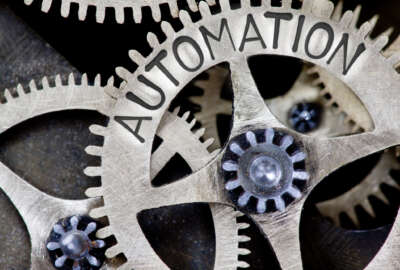
Remote inspections are critical to safely reopening US economy
With phased re-openings of our communities happening at different rates across the country a return to “normal” is months away.
With phased re-openings of our communities happening at different rates across the country a return to “normal” is months away. Even then, “normal” may be redefined with more people working from home and businesses changing their models to respond to consumer demand.
The limitations and coming changes that COVID-19 has placed on our businesses and communities directly impact inspection organizations’ ability to conduct their very essential jobs of keeping us all safe.
Inspectors touch nearly every area of our lives, ensuring compliance with safety standards. Essential government agencies at the federal, state and local level inspect everything around us from water to food to roads. We see the impact when violations go undetected, as with the water crisis in Flint, Michigan. These undetected violations are not a result of negligence, they are a signal that the inspection capacity of our nation is taxed to a breaking point.
Now add to this the impact of COVID-19 closures. Inspectors’ roles in ensuring nursing homes, schools, restaurants, office buildings, and more comply with safety mandates is more important and complicated than ever. To meet this increased demand and complexity inspection organizations have had to change how they work. The entities they inspect have been closed and will need inspections upon re-opening, or even in order to do so. Additionally, there will be new regulations in terms of hygiene and social distancing to monitor and enforce. Finally, there is the health and safety of inspectors to think of and protect. Inspection organizations already hampered by backlogs cannot keep up business as usual and support the safe re-launch of the U.S. economy.
Beyond time for change
Most inspections are performed the same way they were decades ago. That means many processes are still paper-based and require significant time spent in-office conducting manual, inefficient and error-prone data entry. While many agencies say they have digitized inspections, much of this work is merely moving checklists onto a mobile device, and that is just not enough. Inspections agencies need to become data-driven with regulating bodies using the data collected in the field to prioritize inspections, enabling inspectors to focus on areas most likely to be out of compliance or have the most significant risk to the community. Then inspectors need tools to make their fieldwork as efficient as possible.
Inspectors can use their phones to pull up mapping apps to avoid traffic getting to their office, send photos of a beautiful sunrise to their spouse, launch an impromptu video chat with their kids, access last week’s grocery list to have food delivered to their house while they are at work. Yet, none of this technology is available to them to use in their work life. Tools exist today to change that and quickly move inspection workflows to this digital and data-driven approach. It is now critical that these solutions include a way to enable remote inspections to meet both the current and pending backlog crisis.
Beyond business as usual
While typically a very hands-on job, many inspections can be performed remotely. This will be a massive shift for the industry, but if you had said at the beginning of the year that the majority of the federal government would be working from home, people would have thought you were crazy. We’re in a new normal, and that calls for open minds and new solutions.
The first step of moving to remote inspections is to understand what inspections can be done remotely, what can wait, and what needs to be conducted in-person immediately. For this, organizations need to gather and analyze data on their regulated entities to determine risk factors — how likely an entity is to be out of compliance and the impact to the community if regulations are not followed — as well as the complexity of the inspection. Once these determinations are made, organizations have three options for completing the inspections.
- Self Inspection for low risk, low complexity sites: The regulated entity is provided the inspection checklist and process via a self-service portal. They fill it out and submit directly through the portal for inspector review and sign off.
- Video Inspections for medium risk, medium complexity: Inspectors send a meeting notice to regulated entities to meet them in a video conference application that includes a live look at the site as well as access to a digitized and automated inspection workflow, in the same screen. Through this connection, the inspector directs the manager of the inspected entity to walk through the traditional process and completes the review remotely.
- Traditional inspection for high risk, high complexity: An inspector would go out the site, as usual, to conduct the inspection using the mobile application and to follow traditional processes for submission.
All of the paperwork, including a notice of violations, could be handled through the agency’s portal just as it would be with an in-person inspection. Similarly, a portal and self-inspection approach could be used to allow businesses to self-report compliance with new hygiene and social distancing standards.
Enabling data-driven remote inspections not only supports the immediate needs of coronavirus response but can fundamentally change the inspection industry moving forward by providing a new way to prioritize and conduct inspections, reducing the threats caused by backlogs. This essential option is something inspections organizations need to start planning for now.
Vivek Mehta is a founder and CEO of ARInspect, a software as a service-based robotic process automation technology provider using augmented reality and artificial intelligence.
Copyright © 2024 Federal News Network. All rights reserved. This website is not intended for users located within the European Economic Area.




